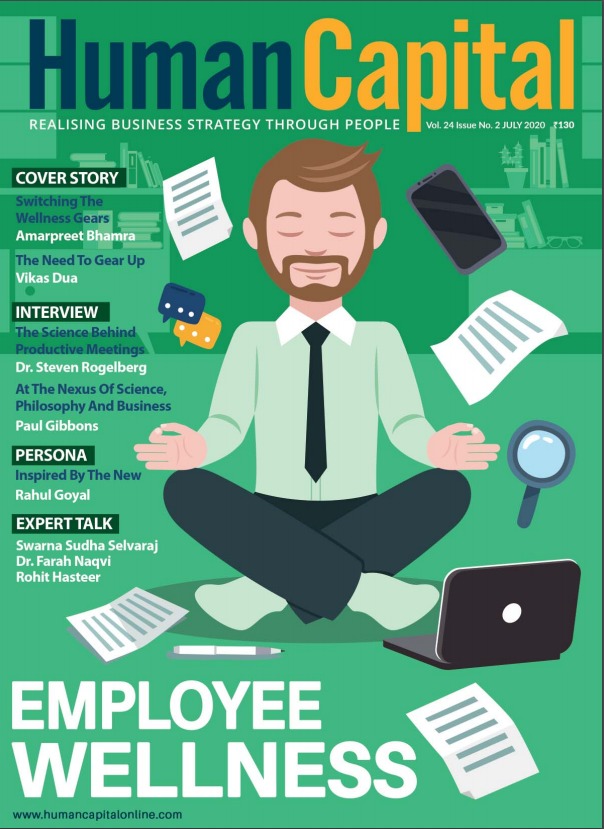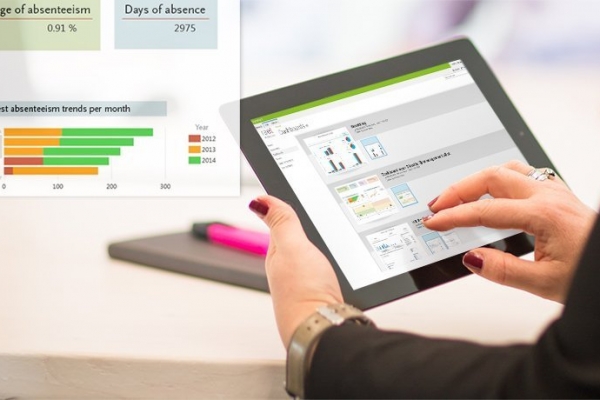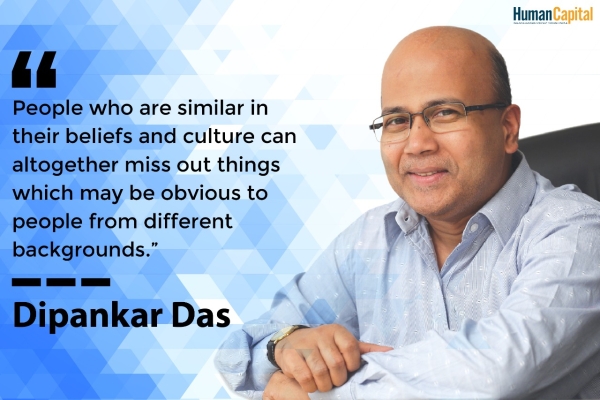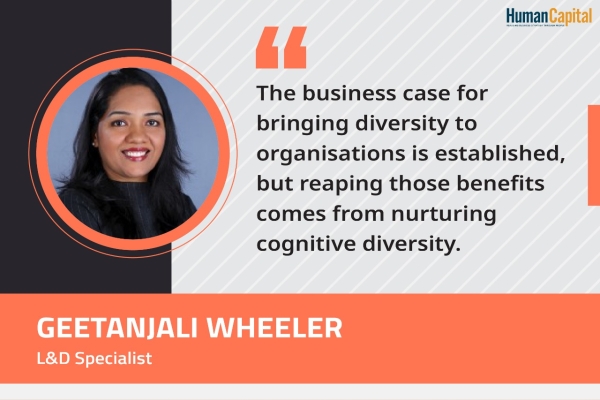“Our only security is our ability to change.” - John Lilly
In the current global emerging market, HR analytics is known as the combination of People Analytics and Talent analytics, and, is used as a tool to analyse the people problems in organisations. Currently, organisations are struggling to understand the existing and potential workforce and utility. According to a research by MIT and IBM, top-performing companies are three times more likely to be sophisticated users of analytics than lower performers. The early adopters of workforce analytics stand to gain a competitive advantage. Organisations at the highest levels of talent analytics practice, including the adoption of workforce analytics, have 8% higher growth in sales, 24% higher net operating income growth, and, 58% higher sales per employee.
Role of Human capital analytics in the emerging markets
In the emerging markets, a successful effort depends on a well-organised combination of fixed assets with financial and human capital. This implies measuring human capital by quality rather than quantity since consistent growth in technology is expected to give consistent growth in human capital, to help emerging markets build into “mature economies.”
In recent years, Human capital measurement and analytics are making fast progress. According to the Annual Global CEO Survey, 78% of CEOs plan to make changes to their talent strategy in response to the global business environment.
.png)
Human Capital analytics ensures that data analysis leads to the identification of a root cause, and, prioritizes the issues as per the severity for the company. It is therefore prudent to work out a cross functional support for the feasible solution development and implementation in the real time markets which will ensure synergy. Further, finalising the solution design with the business in the emerging markets works to minimise resistance.
Challenges with HR analytics
The global financial crisis is a result of the gap between human capital work force and emerging analytics. Engagement with people leads to productivity measures and the outcome is to retain people with the profitability of the organisation in the emerging markets. Analytics itself is a powerful tool that impacts decision-making, and, this technique is used in many industries in ways that are strategic and tactical to achieve maximum from its human capital.
Focus on
- Strategic goals instead of fulfilling the on-demand request
- Capability of developing people analytics within HR
- Reliability of decisions made and value driven activities done
.png)
Challenges in HR analytics for Human Capital
The CEB report 2017, The State of Talent Analytics was conducted amongst 212 talent analytics business leaders and experts around the world, and, the investigation proved the progressive effect of HR analytics on Human Capital management. In an era of human capital analytics, the reports that emanate from valid data sources and specialised custom written tools provide the business intelligence for effective decision‑making at the right time. Undertaking a good correlation analysis and specifically moving beyond the correlation to more rigorous, scientific research requires two sets of tools -
Logical Thinking: Investigate whether HR can separate the data into sets that can be called “test”, do they have an understanding of “control” groups, and what is the impact of these results.
Programming and Statistical analysis: It has various methods for answering with different sorts of questions with precise numbers. To get improved performances appropriate correlation methods and variables need to be chosen.
Benefits of HR Analytics
There are several uses for analytics from a simple gathering of facts to effective adaptations of the market changes, some of these are
- Identifying which sectors of people need attention
- Analysis of the impact on the bottom-line; E.g. Why are people staying for long or leaving in quick succession?
- Forecasting the levels of workforce, and solving or identifying complex problems.
- Implementation of analytics in real time business environment.

The structure of the analytic team depends on the demographics of the organisation and the nature of work. Since it needs to fit with the culture and structure of the organisation in such a way that it allows to hire, train, grow and retain the talent that the organization needs. The formula, combining profit with workforce costs.
The above formula provides insights to the varying influence key factors and provides varied opportunities for change. HC ROI can support the HR programme to identify Performance orientation, Workforce Planning, Employee engagement and Organisation design. If an organisation has to stand out in the crowd of the emerging market economy they have to invest in Human Capital. Human capital, as Claudia Goldin, Henry Lee Professor of Economics at Harvard University says, “Encompasses the notion that there are investments in people (e.g., education, training, health) and that these investments increase an individual’s productivity.” HR analytics can give Human capital the required data to figure out whether the given factors make a difference in emerging markets.
Are you comfortable working with dispersed colleagues?
Trending
-
SBI General Insurance Launches Digital Health Campaign
-
CredR Rolls Out 'Life Happens' Leave For Its Employees
-
Meesho Announces 30-Week Gender-Neutral Parental Leave Policy
-
Microsoft Unveils Tech Resilience Curriculum To Foster An Inclusive Future
-
60% Indian Professionals Looking For Job Change Due To COVID: Survey
-
SpringPeople And Siemens Collaborate For Digital Transformation Push
-
86% Professionals Believe Hybrid Work Is Essential For Work Life Balance: Report
-
Almost 1 In Every 3 People's Personal Life Affected Due To Work Stress
-
Meesho Rolls Out Reset And Recharge Policy For Employees
-
80% Of Talent Leaders & Academics Say Pandemic Changed Skill Needs For Youth: Report
-
Hero Electric Rolls Out 'Hero Care' Program For Employees
-
Human Capital In Collaboration With ASSOCHAM Hosts Virtual Conference
-
IKEA India, Tata STRIVE Collaborate To Create Employability And Entrepreneurship Opportunities
-
SAP India, Microsoft Launch Tech Skilling Program for Young Women
-
DXC Technology, NASSCOM Collaborate For Employability Skills Program
-
Lenskart To Hire Over 2000 Employees Across India By 2022
-
Mindtree Launches Learn-and-Earn Program
-
Tata AIA Extends 'Raksha Ka Teeka' To Its Employees
-
Swadesh Behera Is The New CPO Of Titan
-
NetConnect Global Plans To Recruit 5000 Tech Professionals In India
-
Hubhopper Plans To Hire 60% Of Indian Podcasters By 2022
-
Corporate India Needs More Women In Leadership Roles: Report
-
Aon to Invest $30 Million and Create 10,000 Apprenticeships by 2030
-
Tech Mahindra Launches ‘Gift a Career’ Initiative for Upskilling of Youth
-
40% Women Prefer Flexible Working Options in Post-COVID World: Survey
-
3 out of 4 companies believe they can effectively hire employees virtually: Report
-
Vodafone , CGI and NASSCOM Foundation launch digital skills platform
-
Odisha: Bank, postal employees to deliver cash for elderly, differently-abled persons
-
Skill India launches AI-based digital platform for "Skilled Workforce"
-
Hiring activity declines 6.73% in first quarter: Survey
-
70% startups impacted by COVID-19 pandemic
-
Bajaj Allianz Life ropes in Santanu Banerjee as CHRO
-
Over 70 Percent MSMEs look at cutting jobs to sustain businesses
-
93 Per Cent employees stressed about returning to office post-lockdown
-
Johnson & Johnson India announces family benefits for same gender partners
-
Indian firms turning friendly towards working mothers
-
Welspun India names Rajendra Mehta as new CHRO
-
Wipro partners with NASSCOM to launch Future Skills platform



Human Capital is niche media organisation for HR and Corporate. Our aim is to create an outstanding user experience for all our clients, readers, employers and employees through inspiring, industry-leading content pieces in the form of case studies, analysis, expert reports, authored articles and blogs. We cover topics such as talent acquisition, learning and development, diversity and inclusion, leadership, compensation, recruitment and many more.
Subscribe Now












































Comment